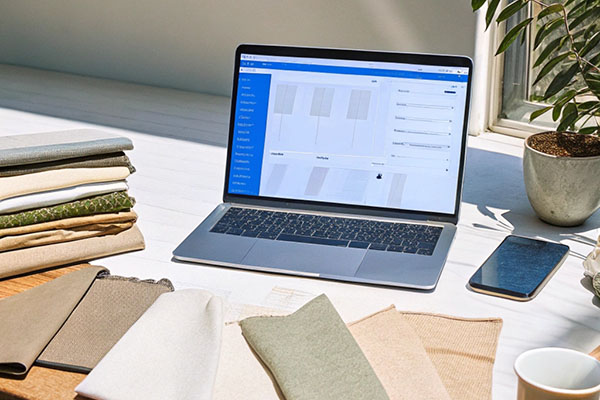China is one of the largest manufacturing hubs for apparel in the world, offering a wide range of OEM apparel services. Whether you’re a budding fashion brand or an established business looking to scale production, finding the right OEM apparel company in China can be a game-changer. However, navigating the market can be challenging without a clear strategy.
To find an OEM apparel company in China, start by identifying your production needs, researching potential suppliers on platforms like Alibaba, and visiting trade shows. Building strong communication and verifying certifications are essential to ensure quality and reliability.
This article provides a step-by-step guide to finding the perfect OEM apparel partner in China, along with tips to avoid common pitfalls.

Why Choose an OEM Apparel Company in China?
China’s robust manufacturing infrastructure and experienced workforce make it a top destination for OEM apparel production.
1. Cost-Effective Solutions
Chinese manufacturers offer competitive pricing due to economies of scale and access to raw materials.
2. Wide Range of Services
- From T-shirts to high-end fashion, China’s OEM companies specialize in diverse product categories.
- They offer customization options such as fabric selection, logo printing, and packaging.
3. Scalability
OEM apparel companies in China can handle large production volumes, making it easier for brands to scale.
Steps to Find the Right OEM Apparel Company in China
Step 1: Define Your Production Needs
Before starting your search, outline your requirements:
- Product Type: Specify items like T-shirts, activewear, or hoodies.
- Quantity: Determine your Minimum Order Quantity (MOQ).
- Customization: Include details like fabric, color, and logo placement.
- Budget: Establish a clear production budget.
Having a detailed plan will help you communicate effectively with potential manufacturers.
Step 2: Research Online Platforms
Online marketplaces are an excellent starting point for finding Chinese OEM apparel companies.
Popular platforms:
- Alibaba1: Offers a vast directory of verified suppliers with reviews and ratings.
- Made-in-China: Focuses on connecting international buyers with reliable manufacturers.
- Global Sources: Specializes in sourcing for wholesale and OEM products.
Pro Tip: Use filters to narrow down suppliers based on certifications, response rates, and customer reviews.

Step 3: Attend Trade Shows
Trade shows2 in China provide an opportunity to meet manufacturers face-to-face and assess their capabilities.
Major trade shows:
- Canton Fair (Guangzhou): Features a large apparel and textiles section.
- China International Fashion Fair (Shanghai): Focused on fashion and textile industries.
- Global Sources Expo (Hong Kong): Ideal for sourcing apparel and accessories.
Benefits:
- View product samples in person.
- Negotiate terms directly with factory representatives.
- Build trust through face-to-face interactions.
Step 4: Verify Certifications and Compliance
To ensure quality and ethical production, check the manufacturer’s certifications3:
- ISO Certifications: For quality management systems.
- BSCI or SEDEX Audits: Indicate social and ethical compliance.
- OEKO-TEX Certification: Confirms fabric safety and environmental standards.
Step 5: Request Samples
Ask for product samples to evaluate:
- Fabric Quality: Test for durability, softness, and color accuracy.
- Stitching and Construction: Ensure neat and consistent workmanship.
- Packaging: Verify branding and labeling details.
Samples help identify potential issues before committing to large-scale production.
Step 6: Communicate Clearly
Effective communication is crucial when working with overseas manufacturers.
Tips for clear communication:
- Use simple, straightforward language.
- Provide detailed specifications and visual references.
- Confirm understanding through written agreements.
Tools: Platforms like WeChat and email are commonly used for communication with Chinese manufacturers.
Step 7: Negotiate Terms
Before signing a contract, discuss:
- Pricing: Ensure transparency in quotes, including material and labor costs.
- Lead Times: Set realistic deadlines for production and delivery.
- Payment Terms: Agree on deposit amounts and payment schedules.
- After-Sales Support: Clarify policies for defective or delayed products.
Negotiating MOQs4 can also be part of securing a favorable deal.
Step 8: Conduct a Factory Visit
If possible, visit the factory to:
- Assess production facilities and machinery.
- Observe working conditions.
- Meet the team responsible for your project.
A factory visit provides valuable insights into the manufacturer’s capabilities and professionalism.

Benefits of Working with OEM Apparel Companies in China
1. Customization
Chinese OEMs can tailor products to your brand’s specific requirements, from unique designs to private labeling.
2. High-Quality Output
Many Chinese manufacturers have years of experience producing for global brands, ensuring consistent quality.
3. Speed and Efficiency
Advanced machinery and optimized workflows enable quick production without compromising quality.
Challenges and How to Overcome Them
While China offers many advantages, there are challenges to consider.
1. Language Barriers
Solution: Work with an interpreter or hire sourcing agents familiar with Chinese manufacturing.
2. Quality Control
Solution: Partner with third-party inspection agencies to conduct quality checks before shipment.
3. Time Zone Differences
Solution: Establish a clear communication schedule and use digital tools to streamline discussions.
Red Flags to Watch Out For
- Unrealistically Low Prices: May indicate poor quality or hidden costs.
- Lack of Certifications: Suggests non-compliance with industry standards.
- Poor Communication: Delayed or vague responses can lead to production issues.
Examples of Successful OEM Apparel Sourcing
Case Study 1: Startup Brand
A small activewear brand sourced leggings from a certified OEM in Guangzhou through Alibaba. By starting with a low MOQ and gradually scaling, the brand achieved consistent growth.
Case Study 2: Established Retailer
A European retailer partnered with a Shenzhen-based factory specializing in eco-friendly fabrics. The collaboration helped expand their sustainable fashion line while maintaining high-quality standards.
Conclusion
Finding the right OEM apparel company in China requires careful planning, thorough research, and clear communication. By leveraging online platforms, attending trade shows, and verifying certifications, you can identify a reliable manufacturer that meets your brand’s needs. With the right approach, partnering with a Chinese OEM can be a cost-effective and efficient way to scale your apparel business.













